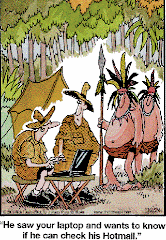The P ianola
ianola
By Hoda Nassef
When I was very young and the streets in Cairo were relatively calm – (imagine!) – I would often wake up to the tinkling music of the “pianola” – (before the radio was invented … just joking!) Delighted that it wasn’t a school day, I would jump out of bed and into my jeans, find my wallet, open the balcony shutters, and toss a few coins to the “Pianola Man” (who was grinding the big music box in the street below) encouraging him to play more music. The minute he got his money, he would walk away carrying the big Pianolo Box on his back. However, he returned punctually every day for the gullible music lover “upstairs”! In remembrance of “the good old days”, I will write about the “Pianola.”
I was reminiscing of the “good old days” when I watched one of the classic black and white Egyptian “oldies” on TV this week, starring the Shirley Temple of the Orient (our Egyptian baby-genius Fairouz) and Anwar Wagdy. In the film story, he was a pianola-player and ‘street musician’. Luckily for the new generation, these old classics can be viewed on television now. Other old films had one or two scenes with Pianolas, and were not props, but the ‘real thing’. What happened to these priceless music boxes? Do we have museums that keep one or two ancient Pianolas? They are works of art, as well as a phase in time never to return.
Many Pianolas varied in size, but the ones I remember were standard; about one metre in height, I think, which would be propped and carried on the backs of the music box grinders, supported by back or shoulder straps. Then the operator (music player) would choose a spot to ‘perform’ and would dismantle the heavy Pianola, which would then be placed on stands, similar to coffee table legs, and the music man (sometimes in a clown outfit, or top hat and tuxedo) would grind the melodies. As time went on, and the Pianolas in Cairo became more scarce, many of the cylinder teeth would be missing, so you often would hear a melody off-tune, due to the missing “teeth”; each ‘tooth’ comprises an essential note.
Some of the Pianolas were smaller in size, and carried on the operator’s chest, suspended as accordions. But the most common ones were the upright Pianolas. Later on, Pianolas took the shape and size of real pianos, and would ‘self-play’. These types were more common in the U.S.A., and I think originated there. Most of the Western films had Pianolas (self-playing pianos) in them. Gradually, the Pianola in the USA evolved into the Juke Box.
I tried locating the source of these big music boxes, or Pianolas, and came up with some interesting information:
For those who are not familiar with this instrument, it is best described simply as a self-playing piano. The player mechanism is powered entirely by suction, generated by the operation of two-foot pedals, while the music is represented by tiny perforations on interchangeable rolls of paper. The operator, or 'pianolist', achieves dynamic shading of the music by varying the degree of pressure applied to the foot pedals. In addition, a set of hand-operated levers mounted just below the front of the keyboard provide accentuation, tempo control, activation of the pedals and selection of play and rewind modes. It is true to say that in the hands of an accomplished operator, a convincingly lifelike performance is achievable.
The player piano enjoyed its peak of popularity between 1900 and 1930, after which time the gramophone, which was significantly cheaper, became the main source of home entertainment. As the vast majority of player pianos are now at least seventy years old and many are sadly dilapidated, enthusiasts all over the world are devoting much time and energy to the restoration of these truly remarkable instruments.
The paper music rolls are still available in abundance, both old and new and almost all musical tastes are catered for. During the first three decades of the twentieth century, a substantial number of famous pianists committed their performances to music roll, by means of special recording pianos. The rolls recorded by George Gershwin, for example, are still popular today and although original examples are now scarce, specialists meet the demand from collectors by producing excellent new copies.
A player piano can of course be played by hand in the normal way, as the piano action and keyboard are entirely conventional. In fact, it is usually possible to play the keyboard while the roll mechanism is in operation, should any additional notes or harmonies be desired!
I thought that the Pianola was originally Italian, due to the origin of the name. However, the term 'Pianola' was actually a trademark, first used by the Aeolian Company just over a hundred years ago, but in more recent times has become a generic reference to the self-playing piano.
The first Pianola was completed by Edwin S. Votey in a workshop at his home at 312, Forrest Avenue, in Detroit, U.S.A., in the spring and summer of 1895, and initially took the form of a large wooden cabinet that stood in front of any ordinary piano. From the rear of the cabinet protruded a row of wooden fingers that were aligned with the keyboard of the piano and activated the keys in the same manner as a human pianist. The player mechanism was powered entirely by suction, generated by pressing two-foot pedals, while tiny perforations on small paper rolls represented the music. The 'tracker bar' - a pneumatic reading device over which the roll was transported - had a row of equally spaced holes; one for each note. A music roll perforation passing over the tracker bar caused a valve to open, which in turn triggered a pneumatic 'motor'. The latter operated a felt covered wooden finger, pressing the corresponding note on the piano keyboard.
Votey later joined the Aeolian Company, which put the instrument on sale in the USA in 1897, and in Europe in 1899. But the Pianola and its competitors were not only the invention of any one person: E.S. Votey’s particular contribution was to draw together a number of existing mechanisms which rendered his creation the first truly musical piano-playing device in the world.
The bodies of the big music boxes, if I remember correctly, had lovely central paintings, like beautiful big candy boxes (bonbonnières) depicting Renoir girls, or paintings of landscape sceneries. Sometimes the central panels would be oval-shaped, with finely carved frames encasing the paintings, and other bric-a-brac surrounding. Often, the front and back wooden music boxes would have the same portraits or sceneries.
The essential thing about the Pianola, is the music cylinder, or called the music roll. The vast majority of music rolls for the normal Pianola were not recorded at a keyboard, but simply perforated by a technician after being marked up in pencil with reference to the original music sheet. Thus, there are no changes of ‘tempi’, ‘rubato’ or phrasing on normal Pianola rolls, and instead the operator (music grinder) is provided with a tempo control, which must be used to create musical performances.
By late 1904, the firm of Welte in Freiburg had developed a new type of player piano, known at first as the Welte-Mignon, and this was followed within the year by the Dea piano, manufactured by Ludwig Hupfeld in Leipzig. Both these instruments and their competitors have over the years come to be known as reproducing pianos, the other main systems being the Duo-Art and the Ampico.
Nearly all of the major pianists of the early twentieth century made rolls for the ‘reproducing piano’, and these recordings are an important legacy of romantic piano music and interpretation, as well as jazz and ragtime. The first era of the player piano came to an effective end in the early 1930s, with sales of instruments all but ceasing during and after the Depression. Besides playing works from the standard piano repertoire, Pianolas may be used for music unlimited by the restrictions of the human hand. Well over seventy composers have written or arranged music especially for the Pianola over the years, including Stravinsky, Hindemith, Milhaud, Percy Grainger and Herbert Howells.
My next mission would be to try to locate the existing Pianolas in Egypt. If I am lucky, I might find one in the Cairo Opera House Museum!
H.N.




























































































































